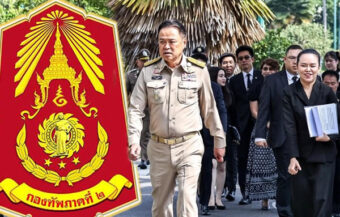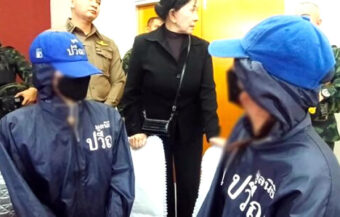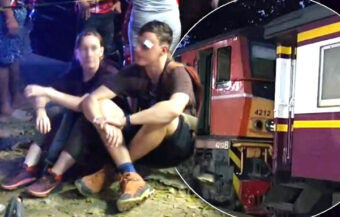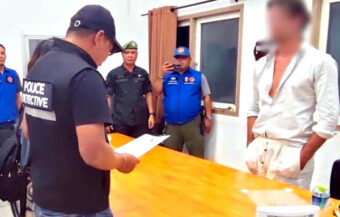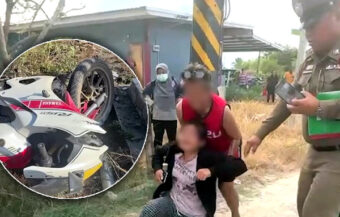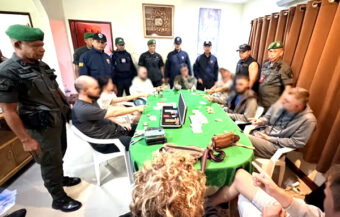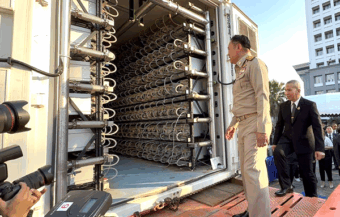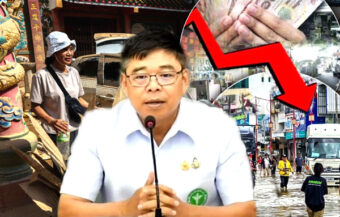War breaks out along the Thai-Cambodian border after Cambodia fires rockets and artillery at Thai villages. Thai Air Force retaliates with airstrikes on Cambodian bases. Civilians killed, mass evacuations underway. Fighting continues across six hotspots as tensions soar.
War broke out along the Thai-Cambodian border Thursday morning, with fierce fighting erupting in at least six hotspots since 7 a.m. At 11 a.m., the Royal Thai Air Force struck back hard, bombing two Cambodian bases after rockets and artillery rained down on Thai civilian areas. So far, at least three civilians are dead and two soldiers wounded amid the relentless shelling that shows no sign of stopping.
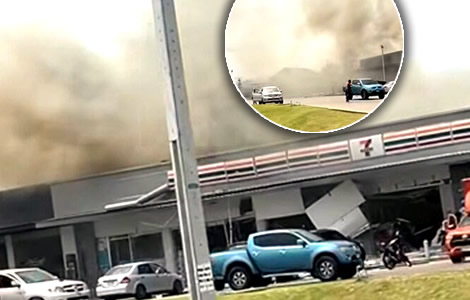
War has officially broken out between Thailand and Cambodia after heavy cross-border fighting erupted early Thursday morning. At least four Thai provinces are being evacuated, with military clashes reported in six locations along the frontier. Although skirmishes have occurred before, this marks the first full-scale engagement in over a decade.
The conflict began shortly after 7:00 a.m. when artillery and small-arms fire were exchanged near the Khao Phra Wihan area in Sisaket Province. Thai authorities are adamant that Cambodia initiated this attack in a naked escalation of simmering tensions.
The situation quickly deteriorated, and by mid-morning, civilian casualties were being reported.
Thai Air Force launches pre-dawn strikes as Cambodian shelling kills civilians and sparks mass evacuations
Meanwhile, before dawn, Thailand had already escalated. At approximately 1:00 a.m., two Royal Thai Air Force F-16 fighter jets conducted airstrikes on Cambodian military bases. According to military sources, both targets suffered severe damage. These pre-dawn strikes were likely in response to heightened tensions and troop movements observed overnight.
Following the airstrikes, Cambodian forces retaliated with artillery shelling. By 9:00 a.m., shells began falling on Thai territory, including populated areas. Most notably, around 11:00 a.m., a Cambodian BM-21 rocket struck a PTT gas station in Ban Phue, Kantharalak District. As a result, the explosion killed two Thai villagers instantly and caused widespread panic. Eyewitnesses described the blast as deafening, with smoke rising high and windows shattering across the area.
As the shelling intensified, evacuation orders were issued across several districts. Government agencies coordinated the mass movement of civilians toward designated shelters. However, traffic congestion soon paralysed key roads, with some vehicles stuck for kilometres. Consequently, emergency responders struggled to reach remote villages amid the chaos.
Villagers take shelter in bunkers as homes suffer shell damage. Government calls emergency meeting
In several areas, residents took matters into their own hands. For example, in Ban Sao Thong Chai, many villagers refused to leave. Instead, they took shelter in makeshift bunkers built years ago during the 2011 border standoff. They brought supplies like rice, canned fish, and water, showing remarkable preparedness based on past experience. Nevertheless, officials still urge all civilians to evacuate when directed.
Elsewhere, in Ban Sri Phanakchai, homes were directly hit by Cambodian shells. Fortunately, no casualties were reported, as most residents had already fled. Although the buildings were damaged, local leaders called it a miracle that no lives were lost. As of now, more than 500 homes are believed to have been damaged or destroyed near the frontline.
In the capital, the Thai government is moving swiftly. Therefore, Acting Prime Minister Phumtham Wechayachai has convened an emergency meeting of the National Security Council at 2:00 p.m. The session, held at Government House in Bangkok, will include top military commanders and intelligence officials. Their goal is to assess the situation and coordinate national defence strategies.
Thai military warns against sharing troop information as hospitals activate emergency protocols
The Royal Thai Army, in the meantime, has warned the public not to share information about troop movements online. Military spokesmen say doing so could endanger lives and operations. Moreover, they have cautioned citizens to avoid unverified news—especially from Cambodian-based sources—due to concerns about propaganda and misinformation.
“We are calling for calm and discipline,” said Lt. Gen. Prawit Chansiri in a midday press briefing. “Do not spread rumours or unconfirmed reports. Lives are at stake.”
Additionally, Thai hospitals near the conflict zone have activated emergency protocols. Medical teams are being stationed at mobile field clinics close to key evacuation points. Supplies are also being rushed in, including bandages, IV fluids, and trauma kits.
On the Cambodian side, government officials deny initiating the attacks. Defence Minister Sok Vanna claimed the Thai airstrikes were “an act of unprovoked aggression” and vowed to defend Cambodian territory. So far, no third-party observers have verified either claim. However, reports of damage to Cambodian facilities continue to emerge.
International response cautious as ASEAN discusses conflict while local areas suffer extensive damage
Meanwhile, international reactions have been muted but watchful. Several ASEAN nations are reportedly holding behind-the-scenes discussions to de-escalate the conflict. So far, no formal statements have been released by regional powers. Still, many fear this conflict could spiral beyond border skirmishes if not contained quickly.
Locally, the situation remains volatile. Gunfire can still be heard in multiple sectors near Kantharalak. Shelling has damaged roads, temples, and even power lines, leaving some villages in darkness. Furthermore, communication networks have also gone down intermittently, making coordination more difficult for authorities.
In many towns, fear has taken hold. Parents rushed to remove children from schools. Elderly residents were carried onto trucks. In shelters, families huddle with blankets and radios, listening for updates. Meanwhile, food and water supplies remain sufficient for now, but aid groups warn that demand is rising rapidly.
Thai military reinforces border with heavy equipment as tensions escalate to the most serious conflict since 2011
Thailand’s military continues reinforcing the border with tanks, artillery, and additional ground troops. At the same time, the Royal Thai Navy has been placed on high alert, although no maritime clashes have been reported so far.
This is the most serious armed conflict between Thailand and Cambodia since 2011, when both countries clashed over the disputed Preah Vihear temple zone. That crisis killed over 20 people and displaced thousands. However, this new conflict appears broader in scale and more unpredictable.
Acting PM and military top brass respond decisively to send landmine incident as Thai soldier loses leg
For now, the sound of war echoes across the Thai-Cambodian border. Civilians flee as shells explode overhead, and leaders prepare for what could be a long and dangerous confrontation. Accordingly, authorities are urging unity, caution and vigilance.
Join the Thai News forum, follow Thai Examiner on Facebook here
Receive all our stories as they come out on Telegram here
Follow Thai Examiner here
Further reading:
Military blasts Cambodia for breaching international law by planting mines which injured 3 soldiers
Dangerous impasse between Thailand and Cambodia as PM rules out International Court of Justice (ICJ)
Hun Manet confirms Cambodia ultimately may decide to send border dispute with Thailand to the Hague
Khmer soldier killed in deadly gunfire between Thai and Cambodian armies near Ubon Ratchathani
Thaksin to address state board on drug suppression despite howls of protest from human rights groups
Health Minister Somsak launches regulatory blitz to outlaw non-medical cannabis use within 40 days


